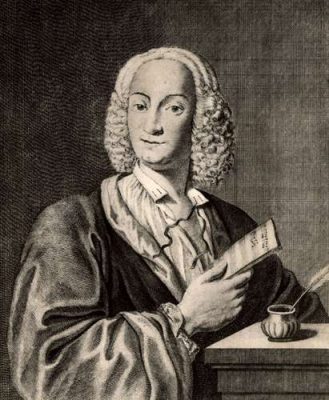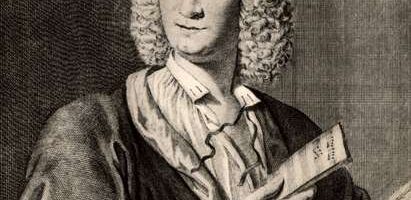
Classical western music is divided into multiple periods where the sound has evolved over time due to historical events and notable composers of the time. Let’s take a look at the Baroque period, which took place from 1600 – 1750! For a brief introduction, check out this short video.
You may have heard of composers like Bach, Vivaldi, and Handel. All of them produced their work during the Baroque period! The Baroque period was so important because it represented an exploration of instrumental music outside of a religious context. During this time, the Church was losing its political influence and control in Europe, which allowed artists to create and explore music outside of religion.
Quite a few musical ideas emerged from the Baroque era, including the concerto, the sonata, and the opera. A concerto highlights a single section or instrument with the rest of the orchestra playing in the background, and the composers Vivaldi and Corelli are well-known for their concertos. Sonatas are similar to concertos in that the focus is on a soloist or specific section. However, they are notable for having multiple unique movements that are still similar because the same key signature is maintained. Sonatas of the Baroque era usually had three movements, and Vivaldi was also well-known for these compositions. The opera allowed composers to explore and convey more moods and expressions in their music, which impacted the listener’s emotions. Though this era allowed for increased expression and creativity in the music, it was still relatively structured and ordered.
Baroque composers also developed an essential aspect of music today, harmonies. Instead of just hearing one pitch and sound, Baroque composers created pieces that had multiple sounds and pitches simultaneously. Harmonies are something we still use today, and it’s actually rare to hear music without harmony!
The Baroque period also created the origins of the modern orchestra. Musical instruments were grouped together in specific ways, almost like how orchestras today are. Baroque ensembles also included another instrument we don’t often hear today: the harpsichord. A harpsichord looks like a piano, but it sounds like a string instrument.
Here’s an easy activity to introduce you to the harpsichord and Baroque music. Listen to a harpsichord concerto composed by Bach here! Listen to the twangy sounds—that’s the harpsichord! Do you hear how the harpsichord is the main instrument? How does the music make you feel? Why do you think that is?
For another listening activity, check out famous Baroque composer Antonio Vivaldi’s Four Seasons. Do you hear the melody and the harmonies? Do you feel different emotions throughout the different movements? What sounds are used to evoke the moods of the season?
And there you have it, a brief introduction to Baroque music! If you’re curious to learn more, look up some of the composers mentioned here and their pieces!
Sources:
Discover the Baroque Period: https://www.classicfm.com/discover-music/periods-genres/baroque/
Baroque Music: A Beginner’s Guide: https://www.classicfm.com/discover-music/periods-genres/baroque/baroque-music-beginners-guide/
Concerto: https://www.britannica.com/art/concerto-music
Sonata: https://www.britannica.com/art/sonata#ref27499
Antonio Vivaldi: https://www.britannica.com/biography/Antonio-Vivaldi/Instrumental-music

